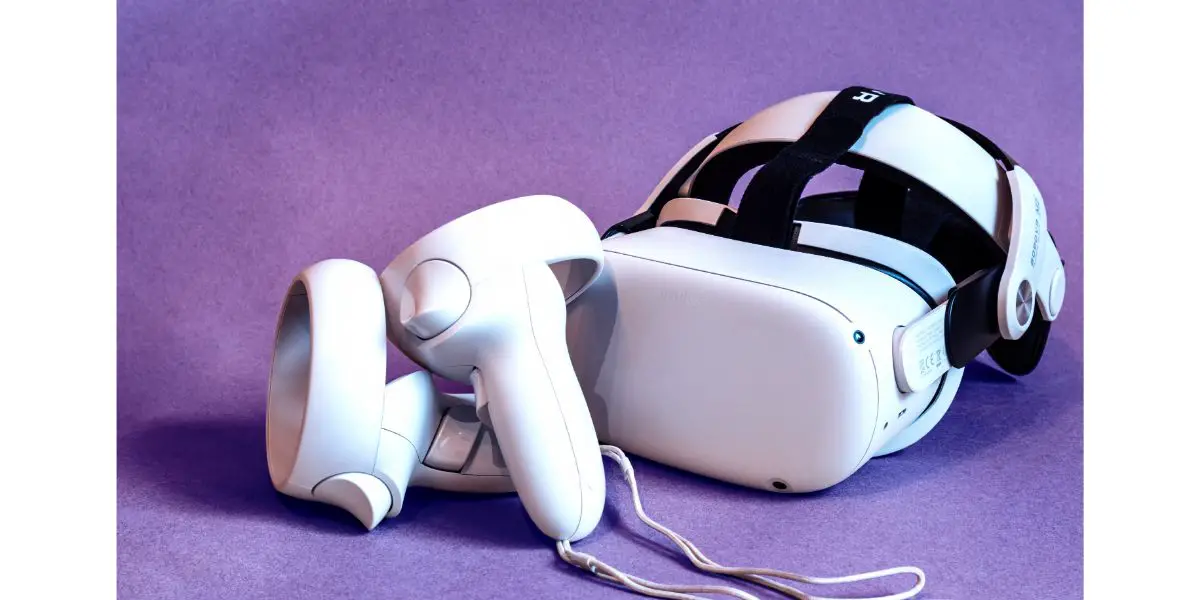Disclaimer: This post may contain affiliate links, meaning we get a small commission if you make a purchase through our links, at no cost to you. For more information, please visit our Disclaimer Page.
Otherwise known as a ‘boot loop’ a constantly restarting Oculus Quest (Meta Quest) will drive anyone crazy, especially if you just bought one. It’s not easy to tell if the device is broken or if you have a software issue going on. One thing is for sure, it’s aggravating.
While the underlying cause is difficult to predict or identify, charging your headset, doing a reboot, switching WiFi, dealing with the proximity sensor, or allowing your headset to do its thing are all various methods that are reported to work.
If nothing else, you can do a full, factory reset of the device. Sure, it’s a last resort, but if none of the above stops the device from constantly resetting itself, it’s time to check the warranty coverage and get it registered.
Table of Contents
5 Potential Fixes to Oculus Quest 2 That Keeps Restarting
1. Charge Your Oculus Quest
Sometimes, the only thing causing your Oculus Quest to act all quirky is the fact that it just needs a good charge. If the battery is really low, it could have just enough juice to turn itself on but not enough to maintain.
Toss it on the charger and give it a few minutes. With the factory charger and everything that comes with the Oculus Quest, it takes about two and a half hours to completely charge an Oculus Quest 2 from dead to 100%.
For some, depending on the age or condition of your Oculus Quest, it may take a little longer or not quite as long. The average playtime between charges is about 2 hours. Different apps have a different effect on how quickly the battery drains as well.
In this case, it might be a good idea to just put the device down for a while and charge it all the way to 100%.
2. Reboot the Router
The Oculus Quest is designed to conduct its own software updates whenever they come out. There shouldn’t be anything you have to do on your own. The Oculus Quest is supposed to download and install updates whenever Meta releases them.
Of course, your Quest is dependent on its connection with your WiFi via your router and sometimes that’s where the hang-up lies. Simply rebooting your router may be enough to stop the endless rebooting cycle.
- Power the router down and unplug the coax or fiber
- Unplug the router from the wall
- Wait about five minutes
- Plug the coax or fiber back in
- Plug the router back in
- Power it back up
- Go ahead and reset the Oculus Quest 2 while you’re waiting on the router
- Try to connect with the Oculus Quest and see if it continues to restart
It might seem like a long shot to some but it works surprisingly often. Then again, gaming systems and electronics in general have a long and illustrious history of working just fine after a standard reset.
3. Proximity Sensor
The Oculus Quest 2 has a proximity sensor on it, which is pretty much standard protocol when it comes to virtual reality devices. All the proximity sensor does is determine if the headset is actually being worn or not.
If the thing gets dirty, it might assume you’re always wearing it or it may not detect anything at all when you slide the headset down over your eyeballs. Of course, if the proximity sensor can’t detect accurately, it will cause problems.
The proximity sensor on an Oculus Quest 2 is located right between the eyes, almost literally. It’s really between the two lenses. You can try one of three things, in no particular order.
Custom facial interfaces are a known problem with Oculus Quest 2 devices and removing them will often solve the problem. Or, you can try covering up the proximity sensor permanently. Whether you use duct tape or nutty putty is entirely up to you, so long as it’s completely covered and stays that way.
Last but not least, you can get some rubbing alcohol and a Q-tip and try cleaning the thing. Hopefully, one of the three options does the trick. For what it’s worth, dealing with the proximity sensor is reported as working more often than not.
4. Factory Reset the Oculus Quest
Factory resets are lost resort options because they erase everything and start the device fresh as if you just took it out of the box. If you’ve had it for a while, that may be the last thing you want to do. Which is why it’s a last-resort option.
- Turn off the Oculus Quest 2
- Hold both the Power button and the Volume Down button until the boot menu pops up
- The Volume Up and Down buttons will navigate to the “Factory Reset” option
- Select “Yes”
- “Confirm”
Of course, before you even start this process, be sure to enable a cloud backup and save all of your data. At the very least, you will be able to recover everything the factory reset process deletes.
5. Check Your WiFi
This is an especially good option if you have a dual-band or tri-band router with multiple channels and automated channel switching.
While your router is busy bouncing the Oculus Quest 2 around, finding the fastest and most clutter-free channel, the Quest is busy messing up and getting confused.
You need to look at the bottom or back of your router or gateway and get the URL, username, and password for accessing and changing the router settings. Once you access the router, you need to ensure that the automatic switching is turned off.
You also need to set the Oculus Quest on the cleanest and fastest channel and leave it there, assuming your router allows you that degree of freedom. If not, you’ll need to contact your ISP (Internet Service Provider).
Final Thoughts
The good news is that the Oculus Quest 2 is not known for having this problem as a common occurrence, and, nine times out of ten, it’s solved by dealing with the proximity sensor or doing a standard reset.
As a last-ditch effort, you may want to check in with Meta’s customer service or look into the warranty of the Oculus Quest 2.


